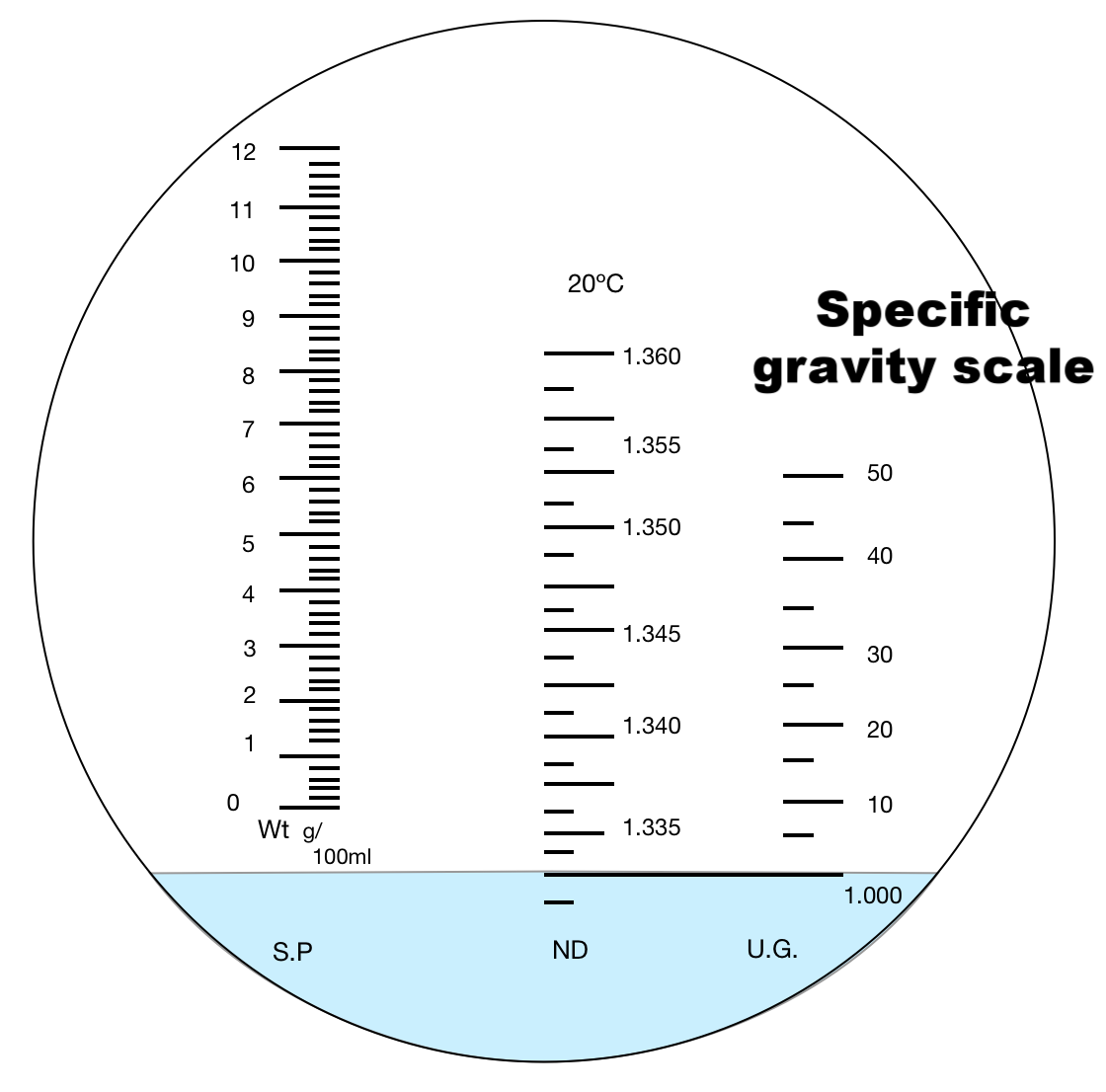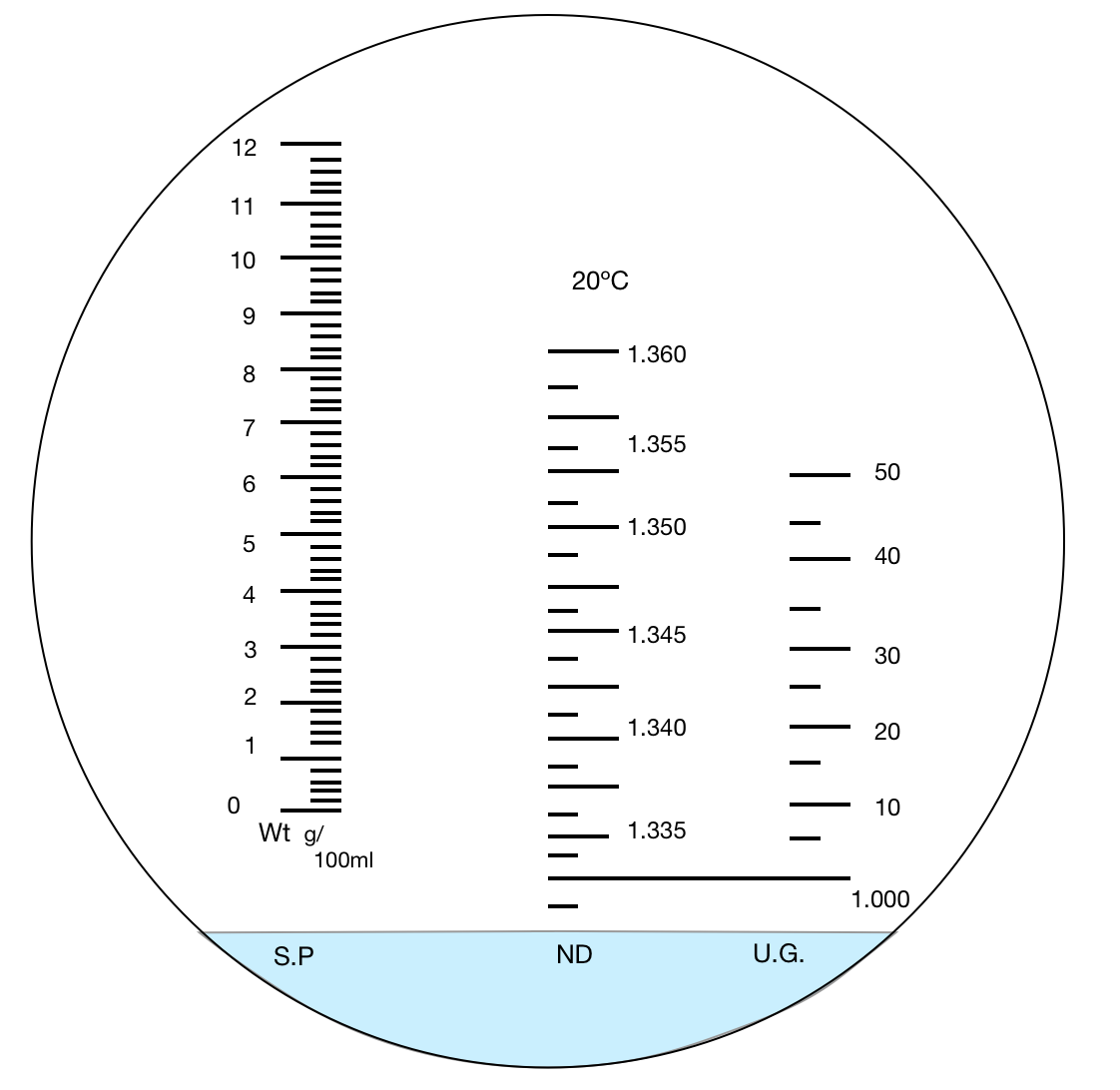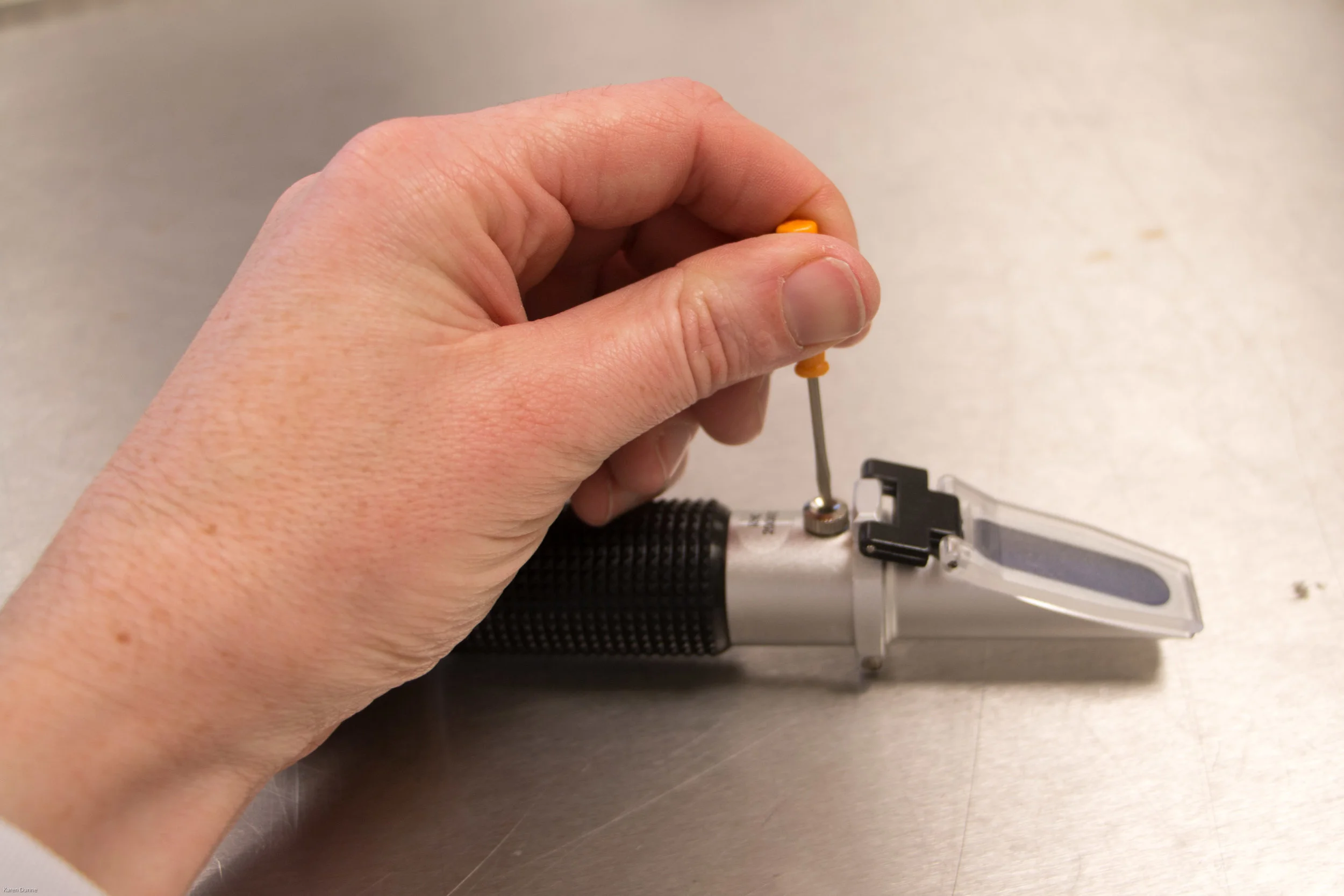Measuring urine S.G. using a refractometer
A refractometer is an instrument that measures the refractive index of a liquid. The more particles there are in a liquid the more a beam of light will be bent (refracted) as it passes from one medium to another e.g. from air to urine. The result is the formation of a shadow line between the illuminated and dark areas. The result is read from where this shadow line crosses the scale on the refractometer.
Components of a refractometer (refer to figure 1):
Measuring prism
Illuminator flap/cover
Eye piece
Bimetallic strip (placed internally)
Calibration screw
Scales
A traditional handheld refractometer consists of a measuring prism that you place a few drops of the liquid to be examined on with a flap to cover the sample. It has an eye piece that you look through as you hold the instrument up to a light source to obtain a reading.
The eye piece can be twisted to achieve a sharply focused image. This makes it easy to obtain an accurate reading of the result. Pressing the flap down with your finger may also help to obtain a clearer image.
There is an adjustable screw behind the stage. This moves the bimetallic strip and so allows the refractometer to be correctly calibrated with distilled water before it is used to test a urine (or plasma) sample. It is important to do this regularly, as the refractive index varies widely with the temperature of the environment.
Veterinary clinical refractometers typically have two or three scales (figure 2). The scale used to measure specific gravity is normally found on the right hand side and is typically labelled as U.G. (urine gravity) or S.G. (specific gravity) with a range of 1.000-1.030 or 1.000-1.040
Figure 2. Clinical refractometer scales (from amazon.com)
The scale on the left in figure 2 is for serum protein (S.P.). It is used to measure the total protein levels present in a serum or plasma sample. Its units are typically g/dl (g/100ml). These units may also be printed on the lid of the refractometer case (figure 3).
The central scale is the refractive index scale (nD or ND). It can be used with appropriate conversion charts to measure the concentration of many other solutions. It is not present on all clinical refractometers.
The scale on the right is for specific gravity (S.G.). It may be labelled as U.G. (for urine gravity) as we will be using it to obtain urine sample specific gravity results.
Figure 3. Serum protein units and specific gravity range on the lid of a refractometer case
To check the refractometer is correctly calibrated before use
Place a drop of distilled water on the prism, close the lid and hold the instrument up to the light while looking through the eye piece. Check that the distilled water reads 1.000 on the specific gravity (U.G.) scale. If it does, the instrument is ready for use.


To adjust the calibration
This is only necessary if the refractometer has not passed the calibration test i.e. the specific gravity reading of distilled water at room temperature is more than 50% of a single graduation above 1.000. With distilled water on the prism remove the cover from the screw and place a small screwdriver (should be in the refractometer case) in it (figure 4). While looking through the eyepiece twist the screw. You will see the shadow line move up or down as you turn the screw. Adjust it until the shadow line lies at 1.000 on the S.G. scale. N.B. ensure you use the correct scale!
Figure 4. Adjusting the calibration screw on a refractometer




